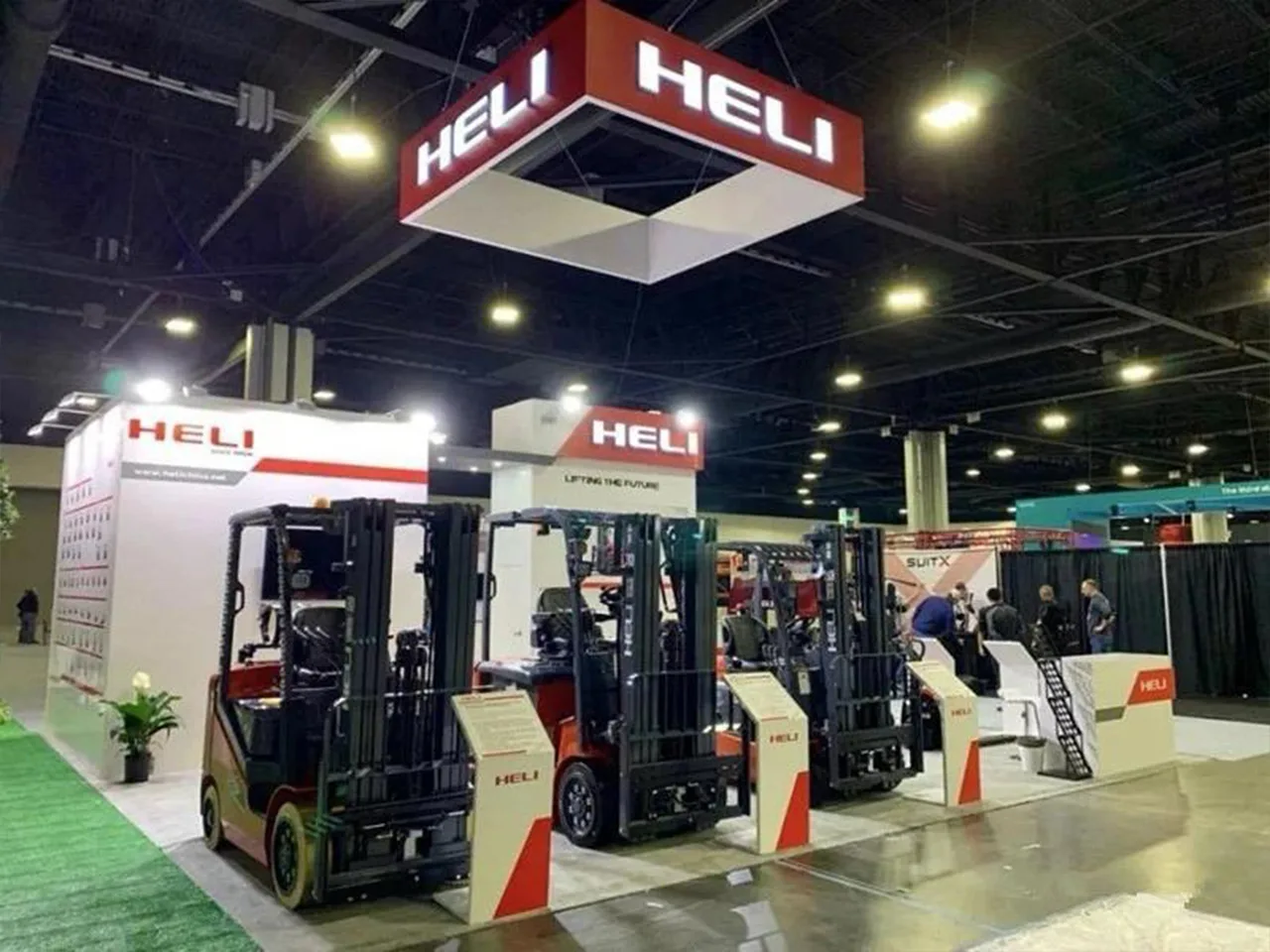Trade shows have always been a boon for business, whether you want to display your new product or connect with top professionals. Behind every successful trade show lie months and weeks of careful planning and execution. However, challenges arise when you need to ensure everything runs smoothly, from logistics and booth setup to marketing and lead follow-up.
Planning and executing a successful event goes far beyond just booking a venue and sending out invitations. It’s a complex process that requires meticulous attention to detail, strategic thinking, and a clear focus on the overall goals. Whether it’s a trade show, corporate conference, or product launch, ensuring everything runs smoothly demands a solid framework of key strategies.
From managing timelines and coordinating logistics to creating seamless experiences for attendees, the role of effective event planning cannot be overstated. In this blog, we’ll break down the essential strategies that event organizers and planners rely on to guarantee success. By focusing on preparation, communication, and adaptability, these approaches help navigate potential challenges, ensuring an event not only meets expectations but leaves a lasting impression.
Explore Critical Strategies to Unlock Trade Show Project Management at your Next Event
Mastering trade show Project management is not just about completing a trade show; it's about creating a smooth, organized, and impactful experience. We will walk you through all the essential strategies for smooth delivery results.
Define Clear Objectives and Goals
Before delving into the logistics, it's crucial to understand the purpose of your participation. Clear objectives and goals act as a guiding light, steering every decision throughout the project.
Whether it's about generating new leads, launching products, increasing brand awareness, or nurturing client relationships, each goal should serve as a compass, directing us in the right direction for our trade show planning.
With a clear objective, it will be easier for the team to maintain focus and stay on the course. Having goals assures that every effort, resource, and decision is aligned with your desired outcomes.
Using S.M.A.R.T. Goals
- Be specific: Be very specific about the goals you would like to achieve. Instead of going after every lead, work on leads that align with your objectives and goals.
- Measurable: Make trackable goals for a more organized workflow with all the deadlines aligning with parameters.
- Achievable: Keep the goals realistic enough; too many ambitious goals may set your team up for disappointment.
- Relevant: The owner's and management's goals must be in harmony with the business's core objectives, as elbow or intercultural differences regarding different goals and different business strategies may make coordination difficult for the team. For example, if the goal is to increase the number of clients, everyone should focus on building relations with the most important contacts in this industry.
- Time-bound: Maintain a proper timeline to track the progress of all the tasks. This helps keep everything organized and ensures smooth execution.
Align with stakeholders: Once everything is in place, it's essential to ensure everyone involved in the show, from management to sales, marketing, and logistics teams, is on the same page.
Therefore, having a project meeting before every project is vital. Hosting a project meeting can help in:
- Clear communication of all the goals with all stakeholders.
- Ensuring each team knows their roles and contributes to the overall objective.
- Address any confusion, concerns, or ideas early for better departmental collaboration.
Build and maintain project timeline
Keeping track of all the tasks depending on the process flow helps structure the project timeline and is vital to keeping the trade show preparation on track. Since most dates are fixed, you must ensure that all tasks, from booth design to marketing, are completed on time. A lucid timeline can help prioritize, avoid last-minute rushes, and handle all unexpected challenges.
Project management tools
Project management tools like Gantt charts, Trello, and Asana are indispensable for organizing everything. You can use these tools to track each task visually, set deadlines, and assign work responsibilities to team members. For instance, you can use a Gantt chart to map out the entire project timeline, Trello to manage individual tasks, and Asana to assign and track work progress. Such tools are pivotal in ensuring that each phase of your trade show planning stays on schedule and allows you to see the project's progress visually.
Breakdown of the project into phases
Dividing the project timeline into distinct phases makes any complex project manageable.
- Initial Planning: Set goals, allocate work, start designing the booth, review the deadlines, and prepare a design brief according to the organizer and client requirements.
- Booth design and production: Finalize materials and give material orders while coordinating with the vendors. Fill out all the forms and make all the necessary orders.
- Marketing and Promotions: Regularly launch email campaigns to promote your brand presence through digital marketing.
- Logistics and Setup: All shipping and travel arrangements and securing onsite services.
Final Preparation: Hold a team meeting to confirm each task and discuss challenges to ensure the smooth delivery of the booth.
Assemble the right team
A show's success relies heavily on a well-coordinated and skilled team. Assigning specific roles to the team depending on their experience is an essential step in the process. For instance, the sales team generates all the leads, the business development team converts the leads, the design team creates experiential designs, the technical team produces all the required details, and a dedicated coordination team stays in touch with the vendor, the client, and the organizer.
Moreover, the process involves strategically executing weekly check-ins leading up to the event to track progress, resolve any underlying issues, and avoid last-minute hassles. Tools like Slack or Microsoft Teams can be integrated to keep everyone in one panel. These tools facilitate real-time communication, file sharing, and project updates, ensuring that no detail is overlooked and that all tasks are executed efficiently. Strong teamwork, encouraged by these tools, ensures that the project proceeds smoothly and all team members are on the same page.
Budget Management
The planning process of each show would incorporate precise budgeting by allocating each cost incurred into its category. For example, design costs can be calculated. Installation and dismantling costs and onsite supervision can also be computed to manage the activities properly.
Logistics Coordination
We should plan with our bookings for booth setup services, confirm shipping timelines, and coordinate travel and accommodation for staff. It's better always to have a checklist of all approved items to ensure they are shipped early to avoid delays on event day, allowing the team to focus on engaging attendees.
Measure success and optimize for future shows
Once the show is over, it's crucial to prioritize evaluating the team's performance. It includes calculating the leads collected, deals closed, total booth traffic, and the overall R.O.I. Identify and discuss in detail with the team about the challenges the team had to face, discuss all strengths and weaknesses, and refine your strategy for future shows. Having a team that continuously strives to improve and enhance the show's quality ensures that each trade show meets expectations and raises the bar for future events.
Get ready to Make your Trade show Presence Productive Than Ever
It is essential to understand that tie-up and coordination of trade show project management requires clear objectives, high attention to detail, and competent project team leaders and their members. Using a well-established timetable, taking centre stage of cost, having appropriate systems enlightening the path of the project, aggressive structures for project completion, and assessing the likely outcome—these steps tell that you will hold an engaging event. Chart your progress to this goal starting now and make your following trade fair more productive than the previous ones.
Recent Posts

Reasons to Hire a Local Booth Builder for Natural Products Expo West 2026
.jpg)
Tips to Make Your Next MD&M (Medical Design & Manufacturing) 2026 Show a Success

How to Choose the Top Booth Contractor for NAHB IBS 2026?

Key Benefits of Partnering with a Local Booth Builder for the AHR Expo 2026

Key Benefits of Attending CONEXPO-CON/AGG 2026
.webp)
.webp)
.webp)
.webp)

.webp)
.jpg)

